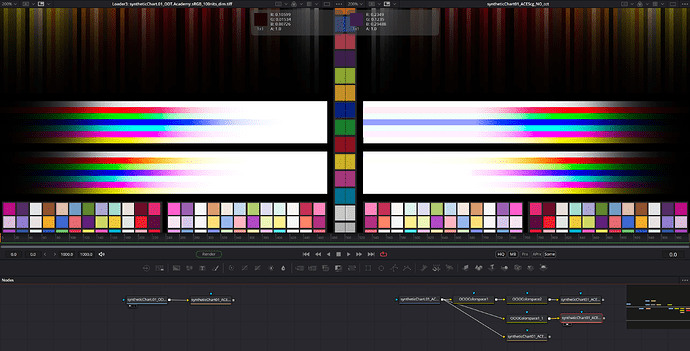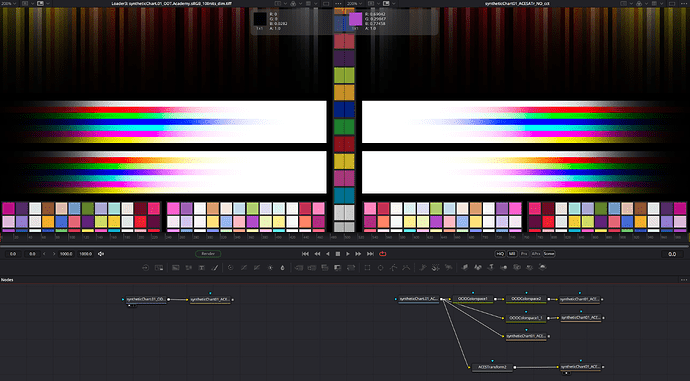Hello,
I am familiarizing myself with ACES pipeline and workflow, I wanted to build out the OCIO node network in Fusion as a means to just really understand all the working parts.
However I have run into a bit of a problem, the sRGB reference ODT image supplied from here: ( Dropbox - syntheticChart.01_ODT.Academy.sRGB_100nits_dim.tiff - Simplify your life ) does not match my output in Fusion.
My node network loads in the ACEScg reference image from here: ( Dropbox - syntheticChart.01_ACEScg.exr - Simplify your life ), and applies these color space transforms,
Loader : ACEScg (Space+Gamma) >
OCIO Colorspace ACEScg input, ACEScct output >
OCIO Colorspace ACESct input, Output – sRGB output.
If I skip the ACEScct portion and do ACEScg > Output – sRGB, the colors match better in different ways but have issues in other ways.
I am not using any LMT or Blue light artifact fixes in this network, its vanilla. The resultant image has a strange effect on the saturated blue/red color bar on the RGBCMY portion of the image. I feel like I am missing something here. (Images included)
NOTE: If I use the embedded color controls for ACES in Fusion or Resolve its fine, the result matches the output reference image without any issue. In the ACES Transform tool (ATr) if I use the below network in Fusion it seems to match the sRGB output perfectly. I am not using any gamut compression in this ATr tool.
Loader : ACEScg (Space+Gamma) >
ACESTransform (ATr) ACEScg input, sRGB output
What am I missing here?
Thank you in advance for any help you can provide in helping me understanding what I am doing wrong.
I am using ACES 1.2 ocio.config from here (GitHub - colour-science/OpenColorIO-Configs: Color Configurations for OpenColorIO) in fusion 18.
-T

